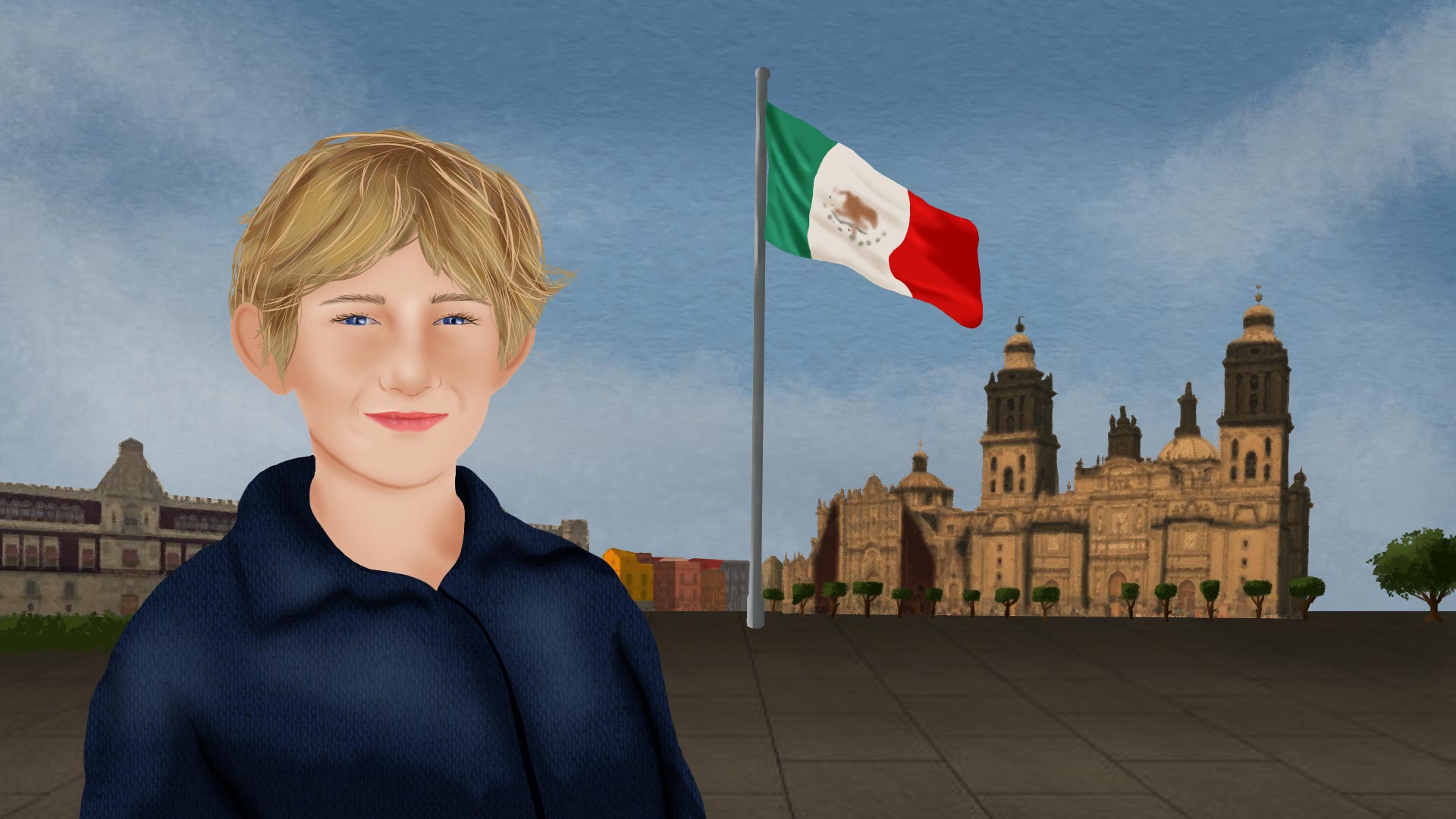


Martín is an 8-year-old Venezuelan boy. Like so many families, his decided to emigrate. In 2018, they settled in Mexico. Inés Araujo, Martín’s grandmother, who is a psychologist and an educator, joined them and stayed with them for a few months. It is true that psychologists are not supposed to counsel their own family, but, from the kid’s dreams, she explores how he copes with the uprooting experience. This dialogue between a grandmother and her grandson circumvents the protocols of the profession to uncover the powerful mobilization of the forces of the unconscious and imagination in children.
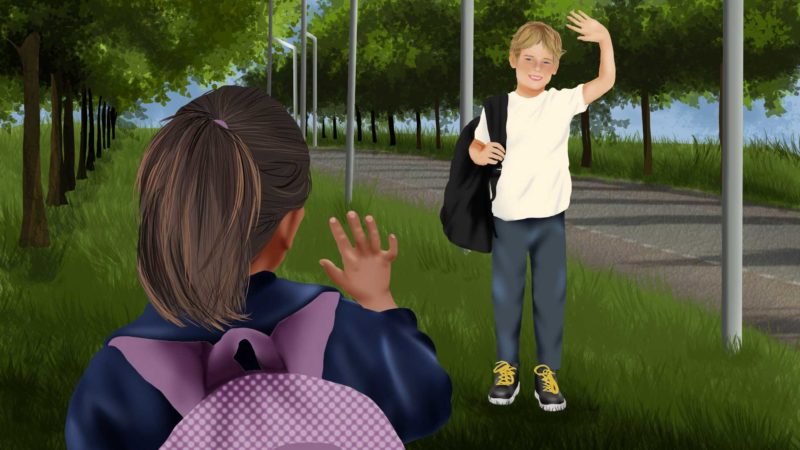 ILLUSTRATIONS: IVANNA BALZÁN
ILLUSTRATIONS: IVANNA BALZÁNHow do children say goodbye? Do they follow their parents’ instructions? Or do they use the language of silence? For Martín, his last days in Venezuela were a chaotic experience, to put it mildly. Pack your belongings and decide what to take with you and what to leave behind. Say goodbye to your family; to your garden; to Bella, the cat. Say goodbye to Santiago, your only cousin; leave for an unknown country. Say goodbye to the people at school and to the teachers. Say goodbye to your dearest friends. Hug them.
At recess, a friend of Martín’s approached him:
“But if you leave now… how will you remember me for the rest of your life?”
Smile, smile. You are at a loss for words.
Children have their own way of delivering on the promise of enduring friendship.
Living in the present moment and trusting his family’s decision, Martín would later board a plane with his mother Lucía and me, his grandmother. In the brief space for transition that a flight allows until the first stopover, Martín has a first glimpse into the country he is heading to as he watches Coco, a computer-animated fantasy film that follows the story of a child’s family in their homeland and brings to light the abundance of colors and textures of Mexico, the amenability of its people, and the fierce intensity of the eagle, the snake, the jaguar and the hummingbird, the mythical creatures that, turned into alebrijes, act as powerful beings that protect the spirit of the Mexican culture at its core.
After a few days in Miami, we leave for Mexico City. Before we board the plane, Margarita, the friend who warmly welcomed us into her house, gives Martín a bag of colorful gummy bears as a present.
We arrive in Mexico City on the first Sunday of May 2018. Times flies as we walk around the city, acquaint ourselves with it, and search for a school and a place to live that is near the school, in that order.
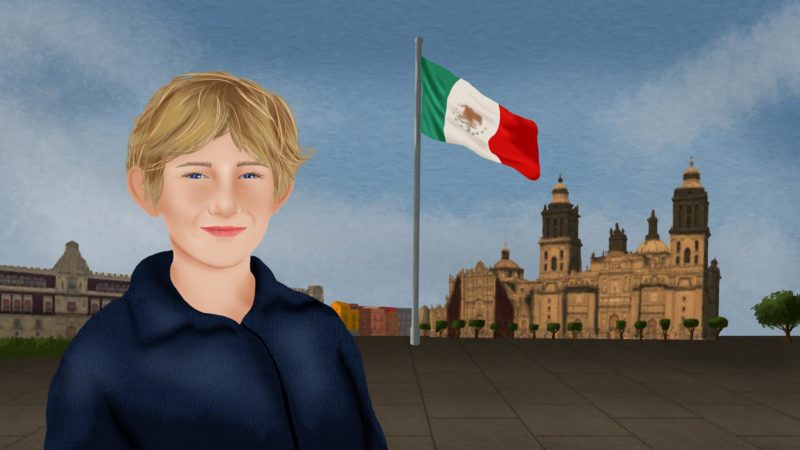
A Venezuelan boy visits the Zócalo in the historic center of Mexico City. It is a weekday and a dense crowd of people weaves through the crosswalks. The enormous square, in full sunlight, opens the scene for tourists. There is a group of feathered characters one corner wearing skirts and headpieces. They jump like puppets in a dance that evokes ancestral rites. They stop, as out of the blue as they started, and sit back on their tedious lives. They look like strolling ponies, stripped of their spirit, absentminded and fragmented, spinning inside impenetrable spaces.
Slightly disappointed, Martín mumbles:
“…they are wearing costumes, like in a carnival…”
The square, under the sun, is good for everything. The organ grinders, with their unique indigenous traits, are dressed in khaki uniform. As they turn the instrument’s handle, the same melody plays over and over again. Oblivious to themselves, they hold out their hats for money.
“Play! Just play already, show some joy, and place the hat on the floor!” Martín says, utterly exasperated.
The gloomy scene contrasts with the intent Mexican gaze of our tiny server at the restaurant as she describes with sparkling eyes the enmoladas and charro beans that we will have for lunch.
We enter the monumental cathedral. As soon as you step into the heavy gloom, you feel as if the high soot-coated domes are pulling you upwards. The hissing of people’s confessions and the trembling flames of the candles hint at the stern path of the vaulted silence. Guilt weighs heavy, with no air or reverence. Stunned, Martín comments:
“It makes you feel tiny but with the strength of the mighty.”
When you step out, you are blinded by the light and your lungs fill with relief. The immense hollowed-out space eats colors away and the acrylic tourism strips the place of presence. Next to the cathedral, the ruins and the model of Tenochtitlán, which is the ancient capital of the Aztec empire, lie in merciless sacrifice under the same sun.
They are moles in search of context. A small poster, about to come off, moves with the breeze, announcing the latency of the sleeping saurian. It is very difficult with such a worn-out reference to think of the discovery of what was once a powerful city with river channels and connecting bridges… a mechanical spider of sorts, consisting of blocks large and dark, as Darth Vader’s force. However, if you sharpen your senses, you can feel that it is still there.
It floats, pulsating like a stingray in a lake of uranium.
Martín had his first dream that night.
When he woke up the next morning, he decided to tell me about it. We both sat on the couch by the large window. That spot would become our place to hear, write down, and talk about his dreams.
“I dreamt about a snake. There was my cat Bella, and a slug, and some colorful gummy bears, and there was me. We were fighting the snake. It was a protracted war.
Bella was a giant. I couldn’t see her, but I could feel her, and all my friends and I were tiny, the size of a toy, but with the strength of the mighty.
Bella clawed at the snake’s skin and subdued it, and I finished it off with a mallet.
At the end, the slug made friends with the snake and left with it. “Don’t go away,” I said. The slug was my friend, and then it became friends with the snake. It was a weird feeling. I was both sad and happy: sad because I had lost my friend, and happy because I had beaten the snake. The bears were an army. Margarita gave them to me as a present and they kept me company during the entire airplane trip from Miami to Mexico.”
I write down the dream in detail. We analyze the images and try to make sense of them: the snake is defeated by Martín and the powerful force of Bella, the alebrije cat. He has the support of his family and friends, embodied in the army of colorful gummy bears. They all are under the protective mantle of Martín’s mom, a cat with vision and power.
There is a smile of satisfaction on Martín’s face, and I am in awe. We relish each other’s company.
And there is the beating of the inner self of a child in necessary solitude. He now knows that there is another side to sadness, one that takes the form of a strange and welcome feeling because it reveals new dimensions. Slugs come and go and make friends with snakes. You lose some, but you win some! One must make sure that children have their own army of colorful teddy bears to march to the lyrics of “tiny but with the strength of the mighty.”
He had the second dream the following night.
“Mimi, I had another dream!”
We run to the sofa, still wearing our pajamas. I have my pencil and my notebook ready. He can’t wait to tell me about it.
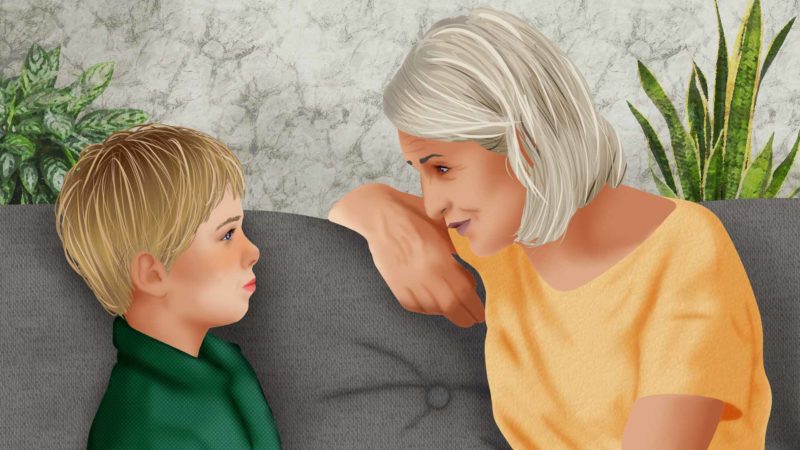
Still fresh in Martín’s mind are his friends and the recent separation; the fatigue from the long walks looking for an apartment in Mexico City, and the first visit to Chapultepec Park and the amusement park. We comment on those referents that make Martín dream of evocative, surreal images: a beach without a sea; a sandy road that starts with school friends; the chess teacher cheering at a race. Martín describes how he sees himself move on a single foot at the speed of the roadrunner through forests, like Chapultepec’s; only these are covered with palm trees, and then some! And then he is back on the road again:
“I was the first to arrive and I bumped into my friend Camila and my friend Adrián, the one who is always complaining. There was a clear plastic wall on one side. I started to climb it up with my fingernails. Camila pushed me just for kicks and the wall moved and turned into a seesaw that went up very high and then down rapidly. Wow!!! I found myself back on the road. I turned around and looked to the other side: there was another clear plastic wall. My friends, those I had met at the beginning, were now on the other side of the wall! And I was like: how could that happen?”
Time passes.
Martín is a bright little figure that follows us with the patience of a saint in our endless tours of the city looking for an apartment. In the afternoons, we go to a park where he can run and play.
Martín is a blond, blue-eyed kid. He is what Mexicans call a güerito.
He is an open boy who loves to make friends; he expresses himself easily and with enthusiasm. He carries his ball with him to the parks and kindly invites the children he meets there to play. They don’t know who he is and are a little hesitant at first, but they end up accepting his invitation.
We are settled now and it’s Martín’s first day at the new school. Lucía takes him there. Days go by and the children keep him at a certain distance. They are not used to being around someone like him, so spontaneous and talkative, so Venezuelan. They think he is just bragging.
The school psychologist conducts the initial interview. “Tell me about your family. What does your mother do for a living? Your grandmother? Why did you come to Mexico?” Martín speaks confidently and answers truthfully. He is asked to draw a picture of his family.
There are new spaces to ease his need for expression.
Meanwhile, at home, we are waiting for Claudia, my youngest daughter, to arrive in Mexico City. She is Aunt Mela, Lucía’s sister, and she is joining us in this migration experience.
In the days leading up to her arrival, Martín woke up in the middle of the night and told his mom he had had a dream that he didn’t like:
“Mimi, Mom, Aunt Mela and I were on a mission to defeat a villain. We each had our own ship, but we were all in it together. When we arrived at the villain’s ship, we saw two doors. The door on the right lead to the ‘forecaster’, a device that predicts what is going to happen, such as earthquakes and hail; there were also guards. The door on the left lead to the villain in command of the ship. We went through the door on the right side and got attacked by the guards. I destroyed the forecaster and we took the guards down. We then went through the door on the left side and we found the master of the ship. He tricked us by giving us the things we loved. He gave me a huuuge tablet; he gave Aunt Mela a microphone; he gave Mimi a box of chocolates, and he gave Mom a computer, because she enjoys working.
The forecast read: meteor. There was a one-hour countdown. I looked through the ship’s cameras and realized that it was no longer a ship but a flying airport, with runways, airplanes and a few captains. We had all been tied up inside the ship because they wanted the meteorite to fall on us. I untied myself and then my mother, Mimi and Aunt Mela.
We looked for our ships, which were made of Lego, and we got on. My mom pushed a red button and the Mexico City force field was activated. I turned around and saw that the villain had gotten on his ship, but it got disassembled and destroyed within five minutes. We finally landed in Mexico City.”
We recorded six dreams over the first three months of our arrival. Martín has learned that we dream every night and that some dreams we remember and some we don’t. Also, that dreams are the construction of an inner part of us, a kind of silent observer that takes notes during the day of whatever happens to us and how we feel, and at night, when we are sleeping, turns that information into fantastic images which it combines in a crazy fashion and which always have something hidden to tell us, like in a riddle.
Weeks passed and Martín had a couple more dreams leading up to the sixth. He is now skilled at finding associations between what he dreams and his everyday life. The one below is a vivid experience of personal victories amazingly achieved without a race or a battle:
“I dreamed of Mario 64. It’s a very difficult game. It is about challenges and levels. I was Mario. I was in ‘Enter’, at the beginning of the game, at the gates of the castle, with my 45 stars (the ones I had gotten so far). I entered the castle and found myself directly in the Snow World to compete in a race against the penguin. But the penguin was nowhere to be found! Sooo weird.
At that moment, I decided to throw Mario off the cliff to exit that level. That was also weird, but I was desperate and it was my only choice. Everything that was happening was very weird because I was Mario and I was not Mario. I was like the character that watches Mario and records him with a little camera mounted on a cloud.
I thought it was a virus.
As I exited the level, I found some doors I had never seen before. I went through them and I instantly started getting stars. It was literally raining stars!!! I would open a door and there was Mario in his victory pose: ‘Heeere weee goo!’ I would open another one and… More stars! And so I was getting more and more stars, as if I was cheating, which I wasn’t, and without fighting or going through levels. I would just got in and got stars until I got all 60!!! Then I went through another door that unlocked other levels, even Bowser’s (the boss). I went in and it was amazing:
I saw all the levels in the game!!!
All the paintings were in front of me, as well as the endless stairs leading to Bowser’s level! I was over the moon. I had never had anything like that happen to me before.
As I was about to enter, I woke up.”
The next day, I was upset to learn via WhatsApp of a situation in the residential building where I live in Caracas. I was very frustrated and had been talking about it for a while, until Lucía said to me:
“Let it go, Mimi!”
Martín, who is usually a witness to these exchanges, approached me and matter-of-factly told me:
“Mimi, what is happening to you is like what happens in Mario 64. You are Mario. If you get to a level and you can’t go through, it’s because you are not ready. So, let go of that world. Go to another world, get your stars and theeen, if you still want to get to that level, go back; it will be easy because you’ve been preparing for it.
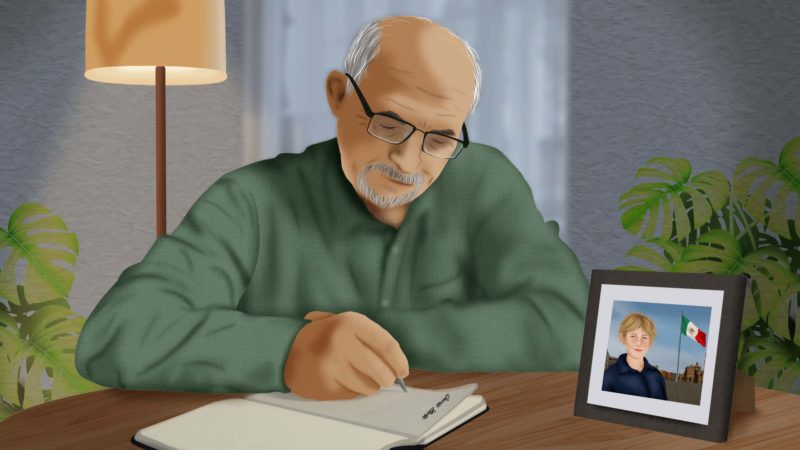
It is 2022.
Martín is now 12. He is still in Mexico and I am back in Venezuela. Last Christmas, when Martín and Lucía were finally able to visit us here, we all gathered home.
In a recent phone call, I told him about a course in narrative medicine I was taking and about the idea of sharing his story. He agreed to it and to our little ‘interview’, and he was pleasantly surprised when we reviewed the material of his dreams. He told me that, earlier that same day, he had been commenting on a dream his father had had and that he showed him the magic of associations.
Santiago, Martín’s cousin in Caracas, is now 10. We see each other often and he also calls me Mimi. I told him about this story and he began to remember some dreams.
In 2018, the same year when this migration journey began, Tata, the Chilean grandfather of both boys, wrote Martín a number of letters from Caracas. El Tata is no longer with us: he passed away in July 2019, when I was still in Mexico with Martín. El Tata always wrote about the wonderful possibility children have of daydreaming:
“Dear Martín,
Today, when I spoke to Mimi on the phone, she told me about how she and your mom are feeling. They are tired and stressed out because of all the things they have to do to settle in that city. Let them be homesick. Many of us are, as is the family, and the ones who leave and the ones who stay. Do you remember when I told you I daydreamed? I did it often when I was your age. Now I can only dream when I sleep, and sometimes I don’t remember well what I dreamt. But, back then, I was lucky to daydream.
Martín, show them what dreaming is: it is like focusing one’s eyes on a spot for a couple of minutes, looking at places and times lost or nonexistent. Don’t interrupt them. You will see how, after a while, they will feel much relieved.”
(Letter from Tata to Martín, June 2018).

This story was written within the framework of the “Narrative Medicine: Our Bodies also Have Stories to Tell” course taught to healthcare professionals via our El Aula e-nos online training platform.
610 readings
I am who I am: Inés. I was born in Caracas, Venezuela. I grew up in awe of my father’s stories and of the mystery that was my mother, whom I managed to decipher in her cascading laughter and space-filling voice. I am fully committed to what I do as an individual and as part of a collective. I am a social psychologist and an educator. Love has filled my life, and I pay it forward gratefully.